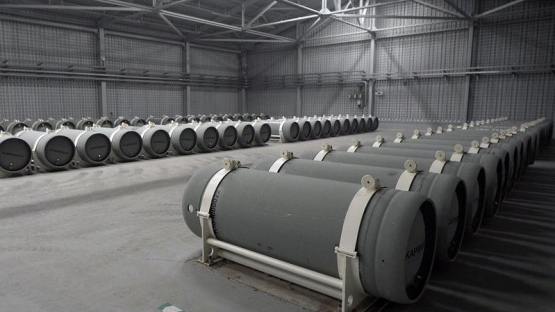Using a graded approach when applying the IAEA safety requirements ensures appropriate attention to organizational and technical areas of safety at nuclear facilities, participants concluded at an IAEA virtual meeting last month. This approach, they agreed, prioritizes safety and provides guidance on how to focus resources on safety in accordance with the level of potential hazard, size and complexity of a nuclear fuel cycle facility.
There are over 300 nuclear fuel cycle facilities operating across 54 countries worldwide. These facilities support the operation of nuclear power plants and cover a diverse range of areas across the fuel cycle where nuclear and radioactive material are handled in various ways, such as in mining, enrichment, fabrication of nuclear fuel, and the reprocessing of spent nuclear fuel. They are of a variety of designs involving various amounts of nuclear materials and varied operation schedules and arrangements, therefore presenting different levels of potential radiological hazards.
Over 60 experts representing operators of nuclear fuel cycle facilities and regulatory bodies of 19 Member States discussed and shared their experiences in the use of a graded approach when applying safety requirements to different kind of facilities.
“IAEA safety standards are applicable to all kinds and types of nuclear fuel cycle facilities, but the way these standards are applied needs to be adjusted in accordance with the facility size, complexity and potential hazard – for example, having more frequent regulatory inspections of facilities such as spent fuel storage or nuclear fuel processing facilities, compared to other kinds of facilities such as those for mining of uranium ores,” said Juraj Rovny, a senior nuclear safety officer in the IAEA Division of Nuclear Installation Safety.
The meeting provided the participants with practical guidance and information, based on the IAEA safety standards, on the use of a graded approach in several organizational and technical areas, such as regulatory inspection, safety assessment, quality assurance, training, and operational safety programmes such as radiation protection, maintenance and operating procedures.
Attendee John Thelen, Senior Project Officer and Inspector of the Nuclear Processing Facilities Division of the Canadian Nuclear Safety Commission, highlighted the value of the meeting and the graded approach: “The regulatory programmes for nuclear fuel cycle facilities in Canada are implemented in accordance with a graded approach to inspection and enforcement activities which results in an effective regulatory oversight,” he said. “This meeting contributed towards further capacity for use of this approach based on systematic methods that are established by the IAEA safety standards.”
The IAEA assists regulators and operators in enhancing safety by publishing safety standards and technical guidelines in all areas of safety of nuclear fuel cycle facilities, conducting peer reviews and safety missions, and organizing technical meetings and training workshops based on these standards.
The IAEA safety standards, which present international consensus on what constitutes a high level of nuclear and radiation safety and serve as a reference for protecting people and the environment from the harmful effects of ionizing radiation, are essential for ensuring safety of nuclear fuel cycle facilities.
“Aligning national programmes and practices with the IAEA safety standards, makes it effective in ensuring and maintaining a high level of safety as well as in strengthening public confidence on use of nuclear science and technology in various development applications, including nuclear power,” said Dinesh Kumar Shukla, former Executive Director of the Atomic Energy Regulatory Board in India, and chairperson of the technical meeting.
The five-day meeting took place from 26-30 July 2021.
Aligning national programmes and practices with the IAEA safety standards, makes it effective in ensuring and maintaining a high level of safety as well as in strengthening public confidence on use of nuclear science and technology in various development applications, including nuclear power






